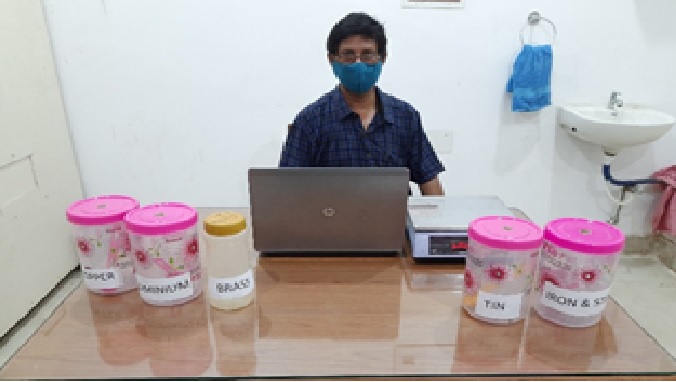By – Dr Kashinath Padhiary & Swagat Padhiary
The environment on earth surface is deteriorating very fast. This is responsible for loss of habitat for many creatures and they are facing extinction. It is also directly or indirectly influencing the living conditions for human beings. Hence as many methods as possible should be taken to maintain the environment. As such if we want to understand the nature we can observe that nature does not waste anything. The same elements and compounds it recycles over and over again to sustain all the creatures as occurs in the form of nitrogen cycle and carbon cycle1. Similarly we should learn from nature to recycle everything we use in our daily life. The things we use are either derived from plants or from minerals. Most of the metals are obtained from minerals. We get minerals by mining and mining itself is responsible for environmental deterioration. If we sincerely try we can grow plants again and produce forest. But under no circumstance we can produce a mine; even nature cannot produce a mine again. Hence we must be very careful in using and recycling things made of minerals (metallic goods). Longer we use the metallic goods and more efficiently we recycle the metallic goods, less demand will be there on mining. Less the mining better is the environmental protection2.
Recycling of bigger metallic objects is operational in almost all countries in different proportion3. But a lot of small and very small metallic objects are wasted everywhere. For example- Alpins or stapler pins are which are made of iron or brass, are often thrown out. Similarly the empty medicine strips which are made of aluminum, even aluminum foils used for packaging or wrapping are also thrown away after single use. If the total amount of such thrown away small metallic things all over the world is taken into account it will be a huge amount. If these things can be recycled, certainly it will reduce the burden on obtaining new minerals to produce the same things again and again. Here we are going to describe a method how these small and very small things can be recycled. We have termed this method as micro-recycling.
Aim:
Preventing wastage of small and very small metallic objects and thereby saving the environment.
Materials & Methods:
Materials:
The following substances are required to run a micro-recycling unit. These are containers (separate for separate metals and alloys), weighing scale of very small magnitude, computer, and ledgers.
Method:
It should be informed to public that instead of throwing away small metallic things, they should bring it to these micro-recycling centers (Picture-1). This can be done by giving advertisement in News papers or in televisions or by public announcement by mikes or by distributing pamphlets. People need not come just to hand over a small pin. They can either keep all small things in a packet and bring once to the centers or deposit in the center if they are passing by that road for some other purpose. People need not come to the center solely to deposit a few pins. This will not be cost effective. In the center the person in charge will first segregate different metallic things or alloys. He will separately weigh them and enter into the ledger. In the ledger he will mention the name of the depositor in one page. The names should be mentioned in alphabetical order so that it will be easy to find out his name on subsequent occasions easily. The same thing can be entered in to the computer also. Once the total deposit exceed certain amount (let us say 100grams), suitable price should be paid to the depositor. The depositor after receiving the amount will put his signature on the ledger to avoid confusion about payment. At the time of deposit also the depositor should sign as a proof of his deposition. Once a substantial amount of metallic things have accumulated they should be transported to a nearest industry where such things can be reutilized.
Discussion:
Though various methods of recycling have been described3, but we did not find any article on our concept of micro-recycling. It is well described that various methods of recycling can be adopted depending on cost effectiveness of recycling process3. However, we say that while protecting the environment the cost should not be considered. The indirect gain we will have will be far more than the cost of recycling.
Conclusion:
If micro- recycling is adopted as a universal method of recycling small/ very small metallic things; it will help greatly to save the environment. These centers of micro-recycling can be established by government or by voluntary organizations or by private people.
References:
- Nutrient cycle (Carbon cycle in biosphere), Biology for XII, National Council of Educational research and training, 2006. P-253.
- uk/sustainable-living/7benefits of recycling. 29th March, 2018
- Recycling- saving the earth- Encyclopedia Britannica. Editor-Michele Metych
About the authors:
Dr Kashinath Padhiary is a retired professor of Medicine. Swagat Padhiary is a student of environmental biotechnology.




 Ms Kalinga
Ms Kalinga